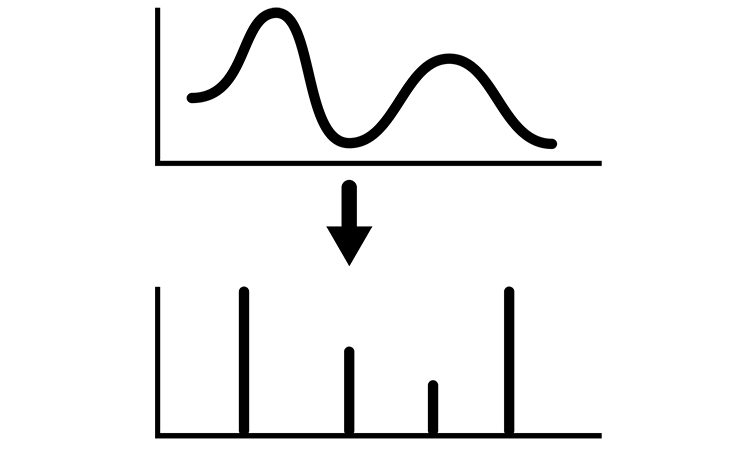Here we consider Fourier transform for discrete-time periodic function. Let’s consider the discrete-time Fourier-representation of a function , where and .
The pair of equations that are called the Fourier pair for discrete-time functions and .
The Fourier transform for discrete-time periodic function has properties that are similar to the properties of a continuous-time Fourier transformation listed below.
- Linearity. For the two pairs of Fourier transformation and , and for the function the Fourier transformation will be .
- Periodicity. For the pair of Fourier transformations and . The Fourier transformation of two functions are different within a period are identical .
- Shifting property. If we have a shifted discrete-time function so the corresponding Fourier transformation for this function will be .
- Conjugation. For the pair and there is a conjugation rule that for the function the Fourier transformation is: .
- Differencing property. Let’s consider the discrete-time function , so for the sum will correspond the Fourier transformation .
- Time reverse. Let’s consider a function and it’s Fourier transformation , so for the function the Fourier transformation will be .
- Expansion property. For the discrete-time function f[an] the function of the Fourier transformation will be .
- Differentiation property. If we have a discrete-time function , that is characterised with the Fourier transformation , so the differential of the Fourier transformation will correspond to the function .
- Parseval formula. For the discrete-time function with Fourier transformation the following Parseval relation is valid . This means that the signal energy can also be integrated by frequency. As for the continuous-time signals is the energy density spectrum.
- Convolution property. Let’s consider two discrete-time functions and with Fourier transformations and , and discrete-time function that is the convolution of two discrete-time functions. So the function g[n] will have the Fourier transformation .
- Multiplication property. Let’s consider two discrete-time functions and with the multiplication product . Let’s assume they are characterised with Fourier transformations and . So the Fourier transformation of the function is is .
Let’s consider the LTI system, which is characterised with the equation . Functions and are characterised with the Fourier transformations and . So, the LTI system is characterised by the Fourier transformation: .[1]
More educational tutorials can be also accessed via Reddit community r/ElectronicsEasy.
[1] “Signals and systems”, 2nd edition, 1997. Alan V. Oppenheim, Allan S. Willsky.<span>LTI systems and their properties</span>




